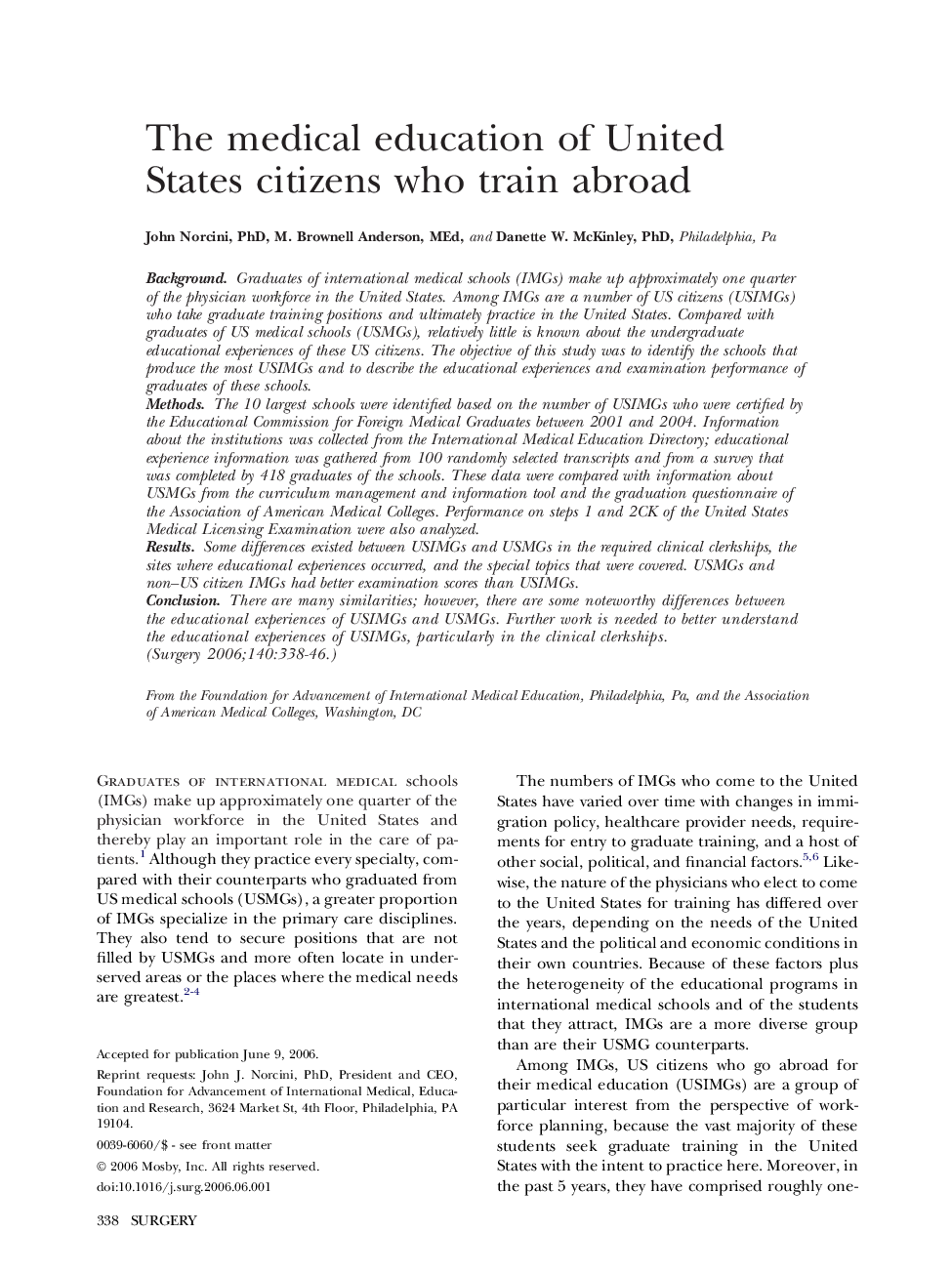| Article ID | Journal | Published Year | Pages | File Type |
|---|---|---|---|---|
| 4309818 | Surgery | 2006 | 9 Pages |
BackgroundGraduates of international medical schools (IMGs) make up approximately one quarter of the physician workforce in the United States. Among IMGs are a number of US citizens (USIMGs) who take graduate training positions and ultimately practice in the United States. Compared with graduates of US medical schools (USMGs), relatively little is known about the undergraduate educational experiences of these US citizens. The objective of this study was to identify the schools that produce the most USIMGs and to describe the educational experiences and examination performance of graduates of these schools.MethodsThe 10 largest schools were identified based on the number of USIMGs who were certified by the Educational Commission for Foreign Medical Graduates between 2001 and 2004. Information about the institutions was collected from the International Medical Education Directory; educational experience information was gathered from 100 randomly selected transcripts and from a survey that was completed by 418 graduates of the schools. These data were compared with information about USMGs from the curriculum management and information tool and the graduation questionnaire of the Association of American Medical Colleges. Performance on steps 1 and 2CK of the United States Medical Licensing Examination were also analyzed.ResultsSome differences existed between USIMGs and USMGs in the required clinical clerkships, the sites where educational experiences occurred, and the special topics that were covered. USMGs and non–US citizen IMGs had better examination scores than USIMGs.ConclusionThere are many similarities; however, there are some noteworthy differences between the educational experiences of USIMGs and USMGs. Further work is needed to better understand the educational experiences of USIMGs, particularly in the clinical clerkships.
